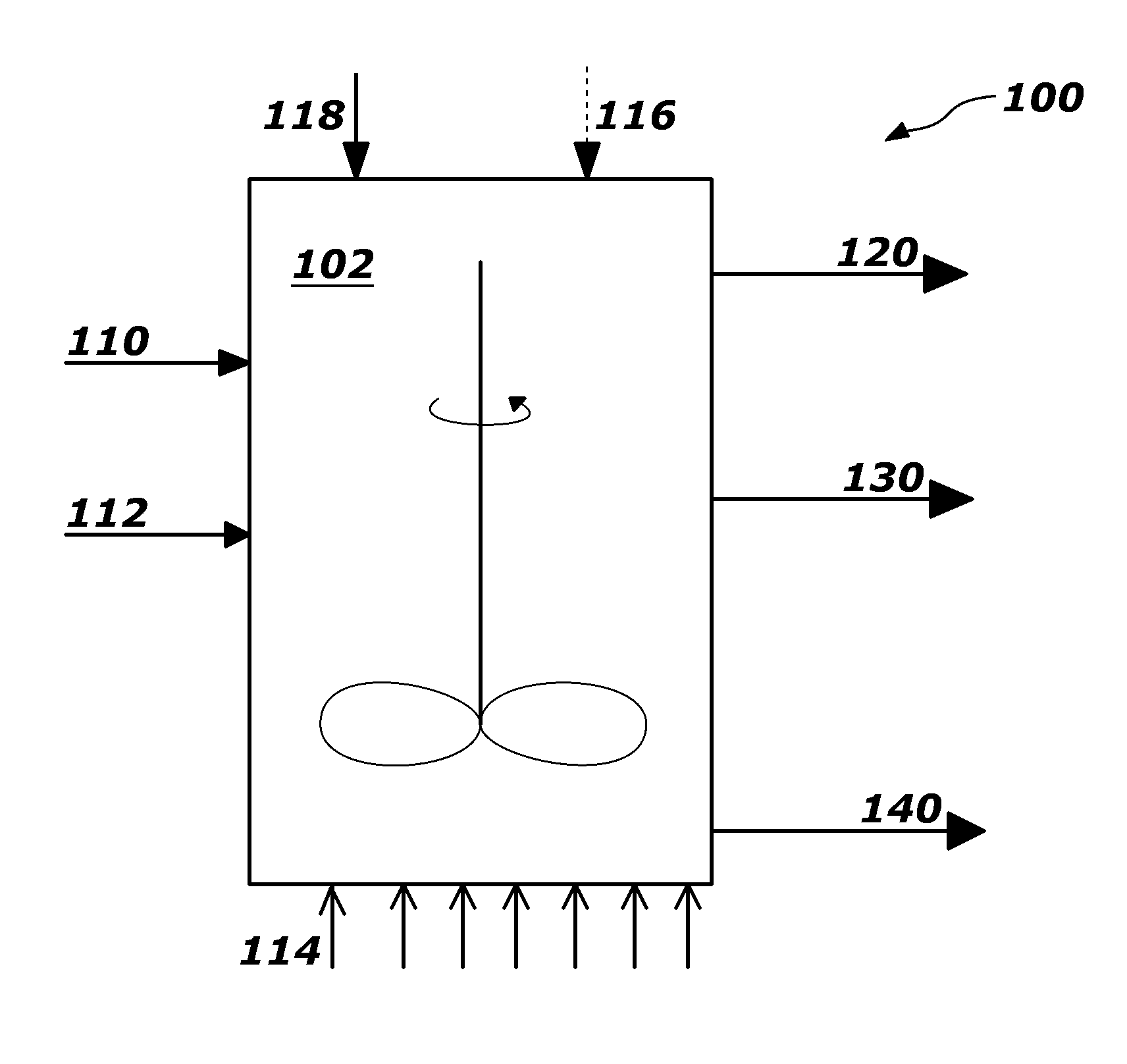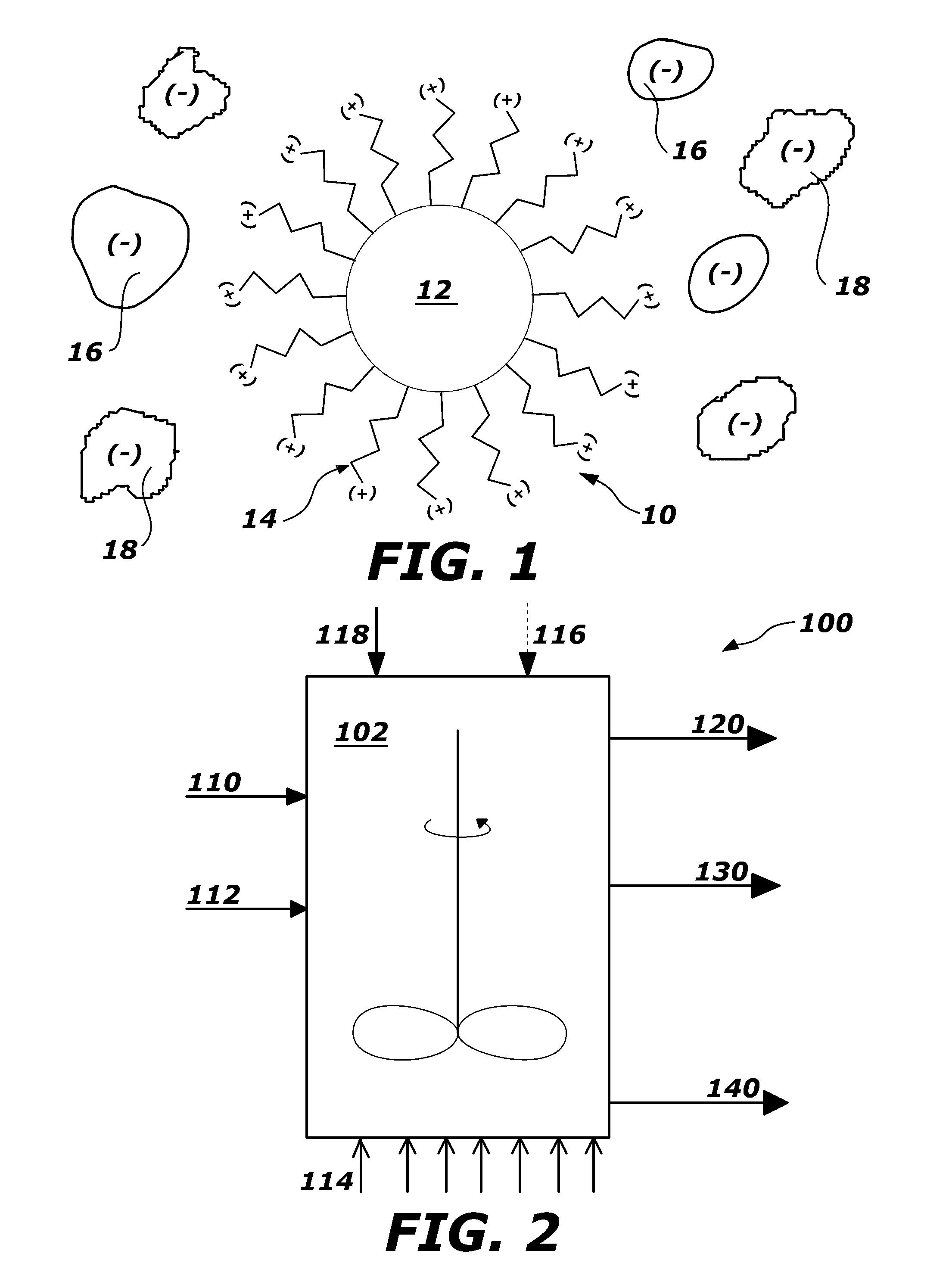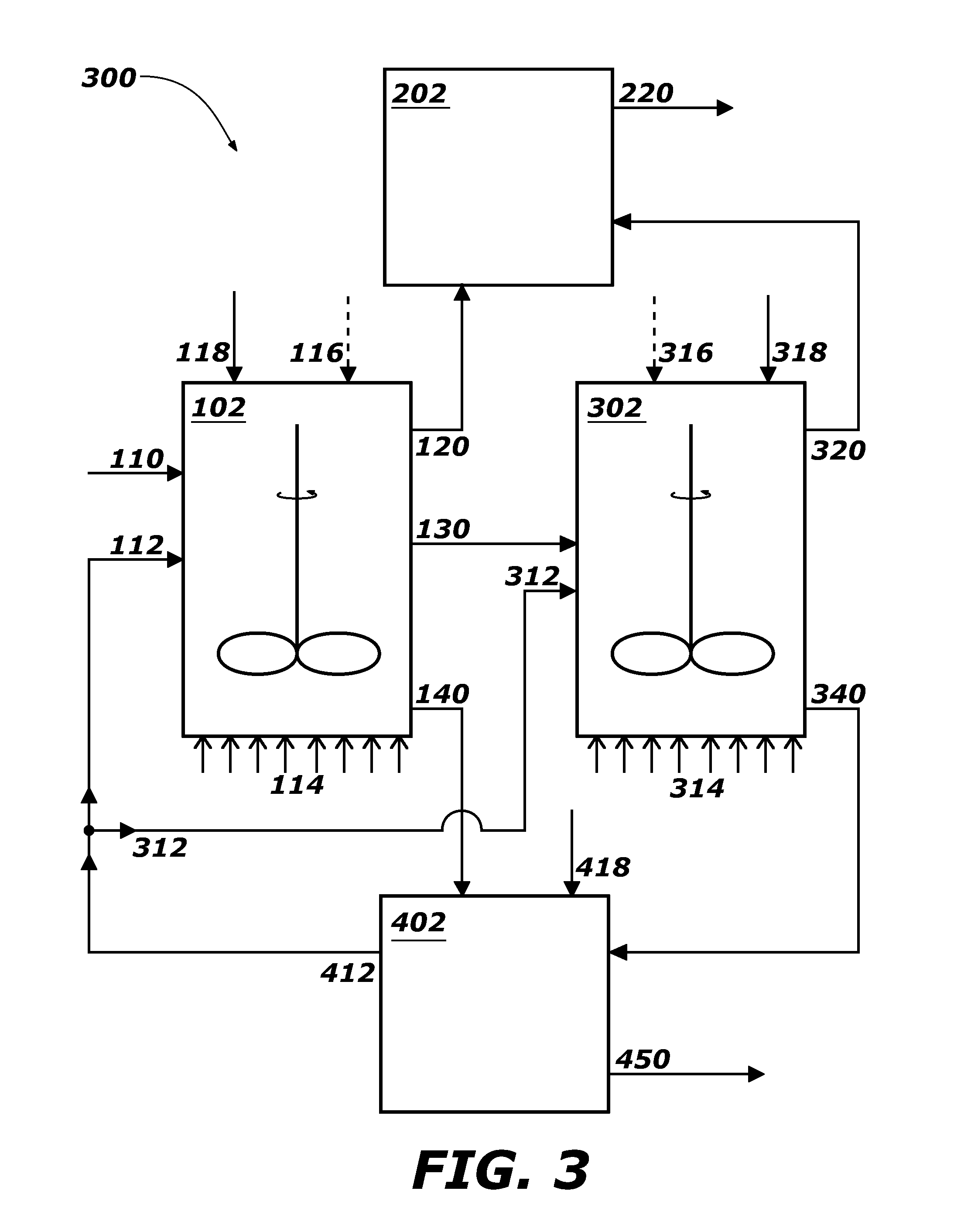Flocculants and methods for recovering bitumen from oil sands
a technology of flocculants and oil sands, which is applied in the field of flocculants and methods for recovering bitumen from mined oil sands, can solve the problems of bitumen to separate from the mineral particles, and the difficulty of economic recovery of bitumen from oil sands
- Summary
- Abstract
- Description
- Claims
- Application Information
AI Technical Summary
Benefits of technology
Problems solved by technology
Method used
Image
Examples
embodiment 1
[0043]A flocculant for bitumen recovery, comprising: a core nanoparticle selected from the group consisting of silica nanoparticles, alumina nanoparticles, titania nanoparticles, iron oxide nanoparticles, iron nitride nanoparticles, iron carbide nanoparticles, and carbon-based nanoparticles; and at least one functional group on a surface of the core nanoparticle, the at least one functional group being positively charged.
embodiment 2
[0044]The flocculant of Embodiment 1, wherein the core nanoparticle has a diameter of less than about 50 nm.
embodiment 3
[0045]The flocculant of any one of Embodiments 1 and 2, wherein the core nanoparticle is a carbon-based nanoparticle selected from the group consisting of nano-diamonds, carbon nano-tubes, fullerenes, carbon onion-like structures, graphene, and graphene oxide.
PUM
| Property | Measurement | Unit |
|---|---|---|
| diameter | aaaaa | aaaaa |
| particle diameter | aaaaa | aaaaa |
| particle diameter | aaaaa | aaaaa |
Abstract
Description
Claims
Application Information
 Login to View More
Login to View More - R&D
- Intellectual Property
- Life Sciences
- Materials
- Tech Scout
- Unparalleled Data Quality
- Higher Quality Content
- 60% Fewer Hallucinations
Browse by: Latest US Patents, China's latest patents, Technical Efficacy Thesaurus, Application Domain, Technology Topic, Popular Technical Reports.
© 2025 PatSnap. All rights reserved.Legal|Privacy policy|Modern Slavery Act Transparency Statement|Sitemap|About US| Contact US: help@patsnap.com



